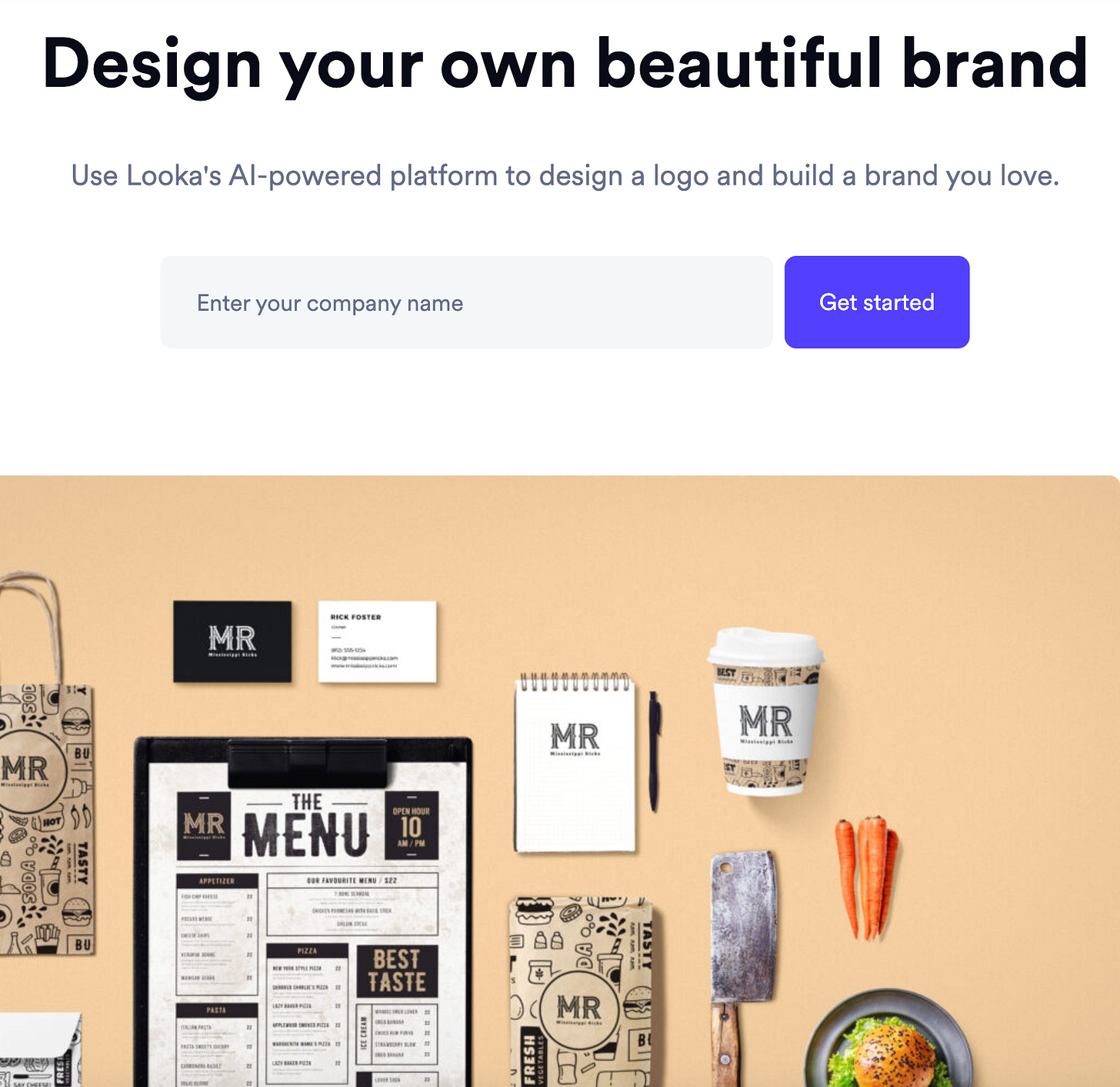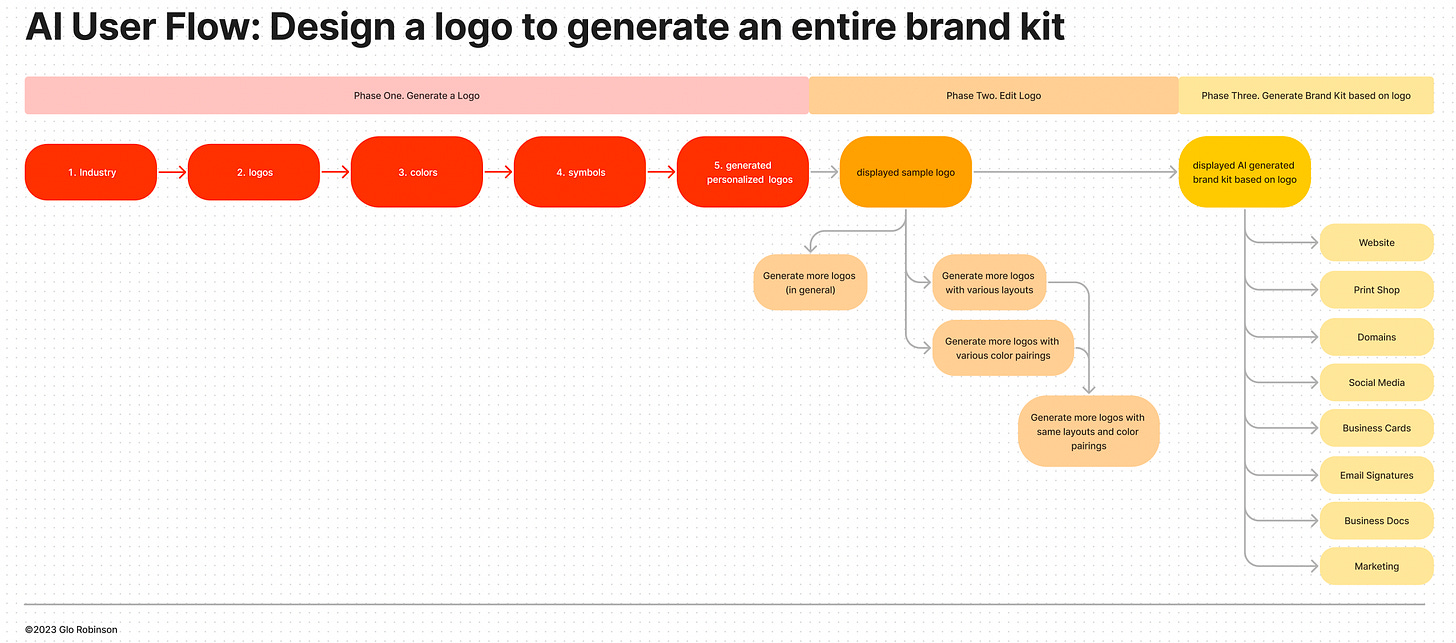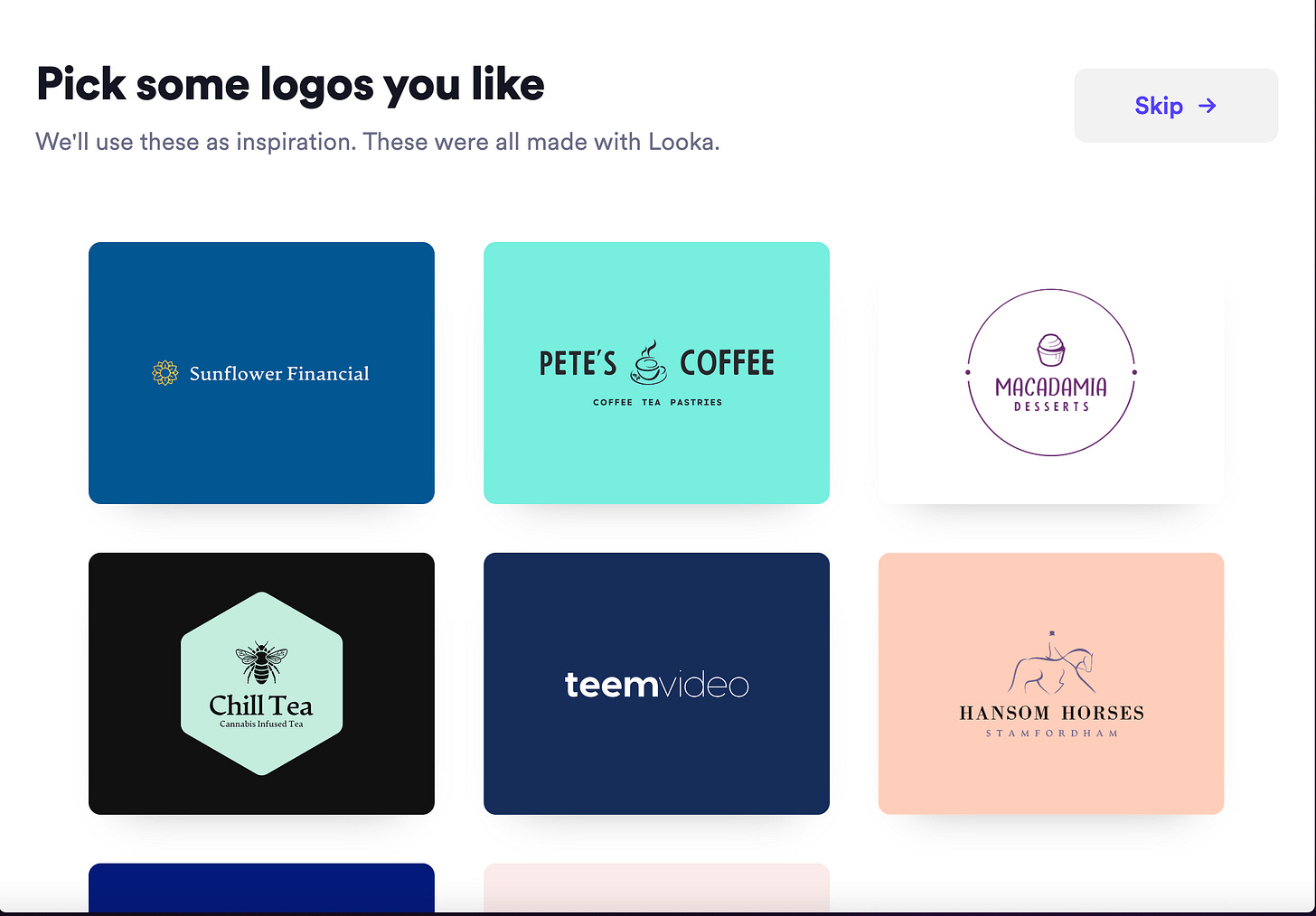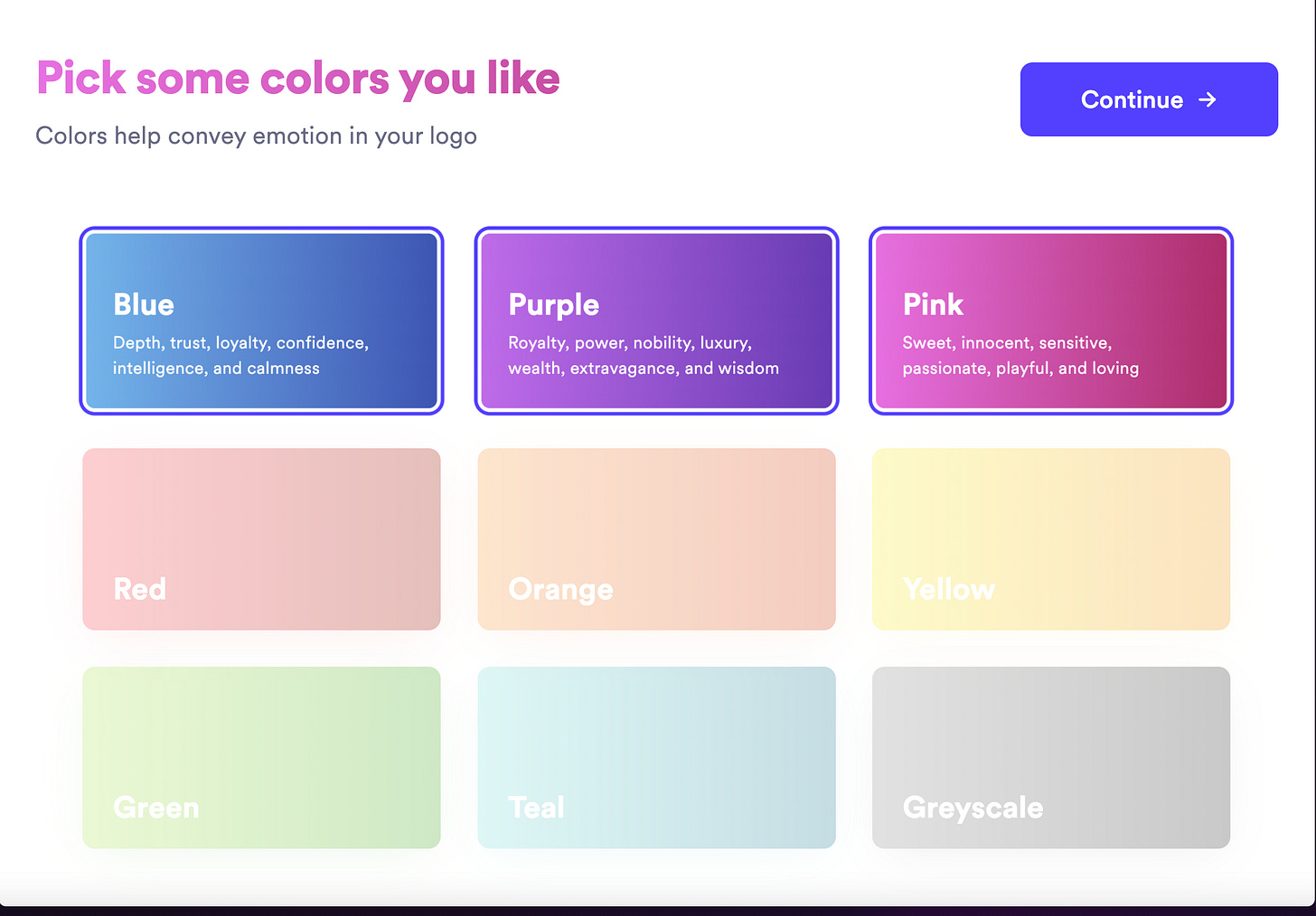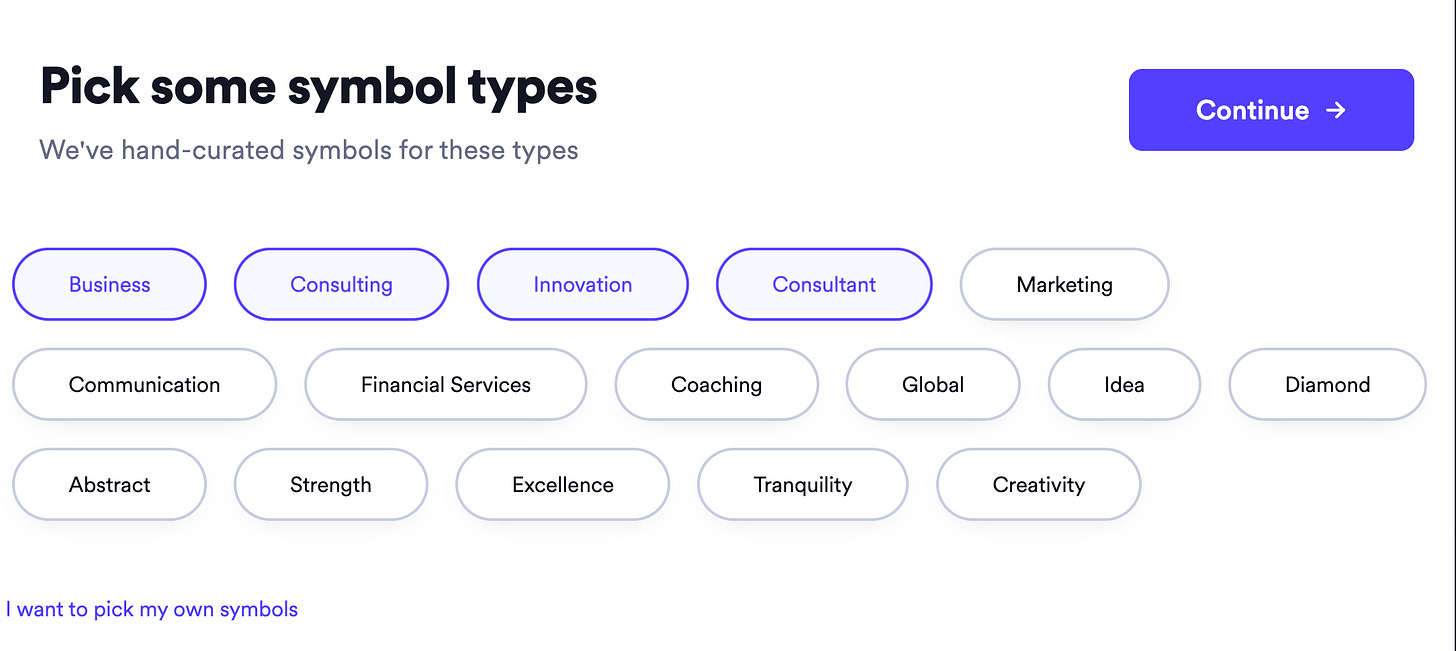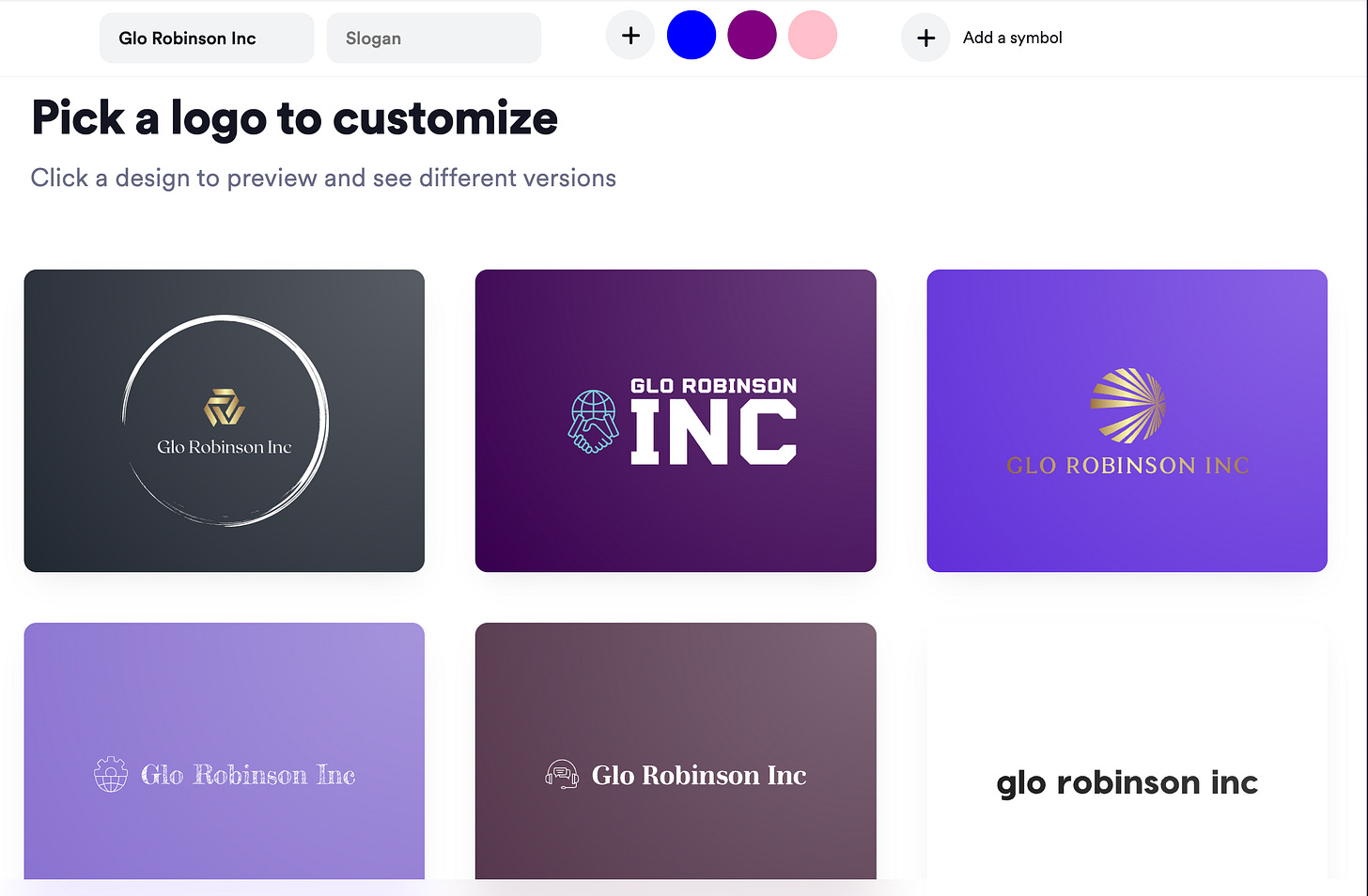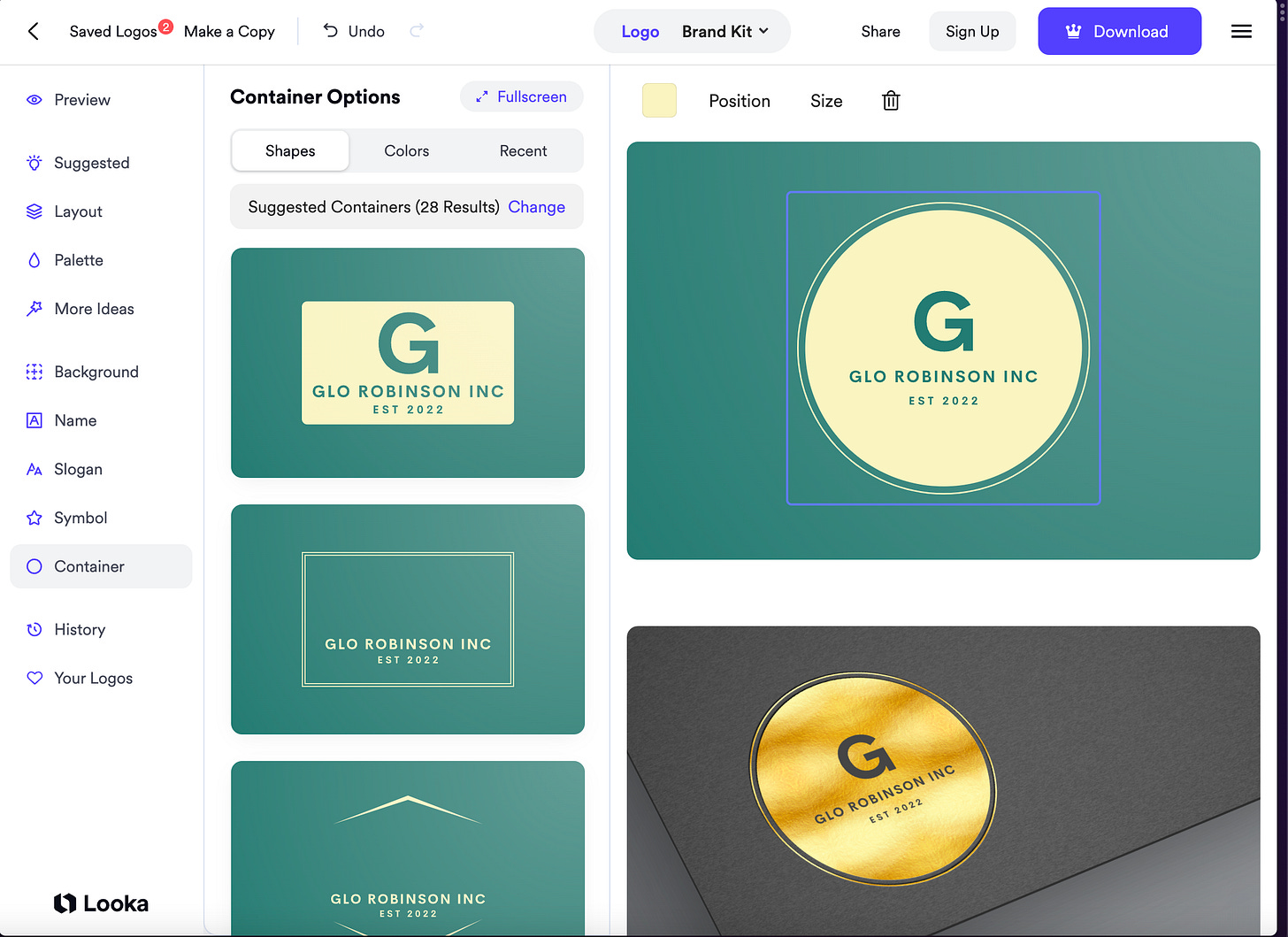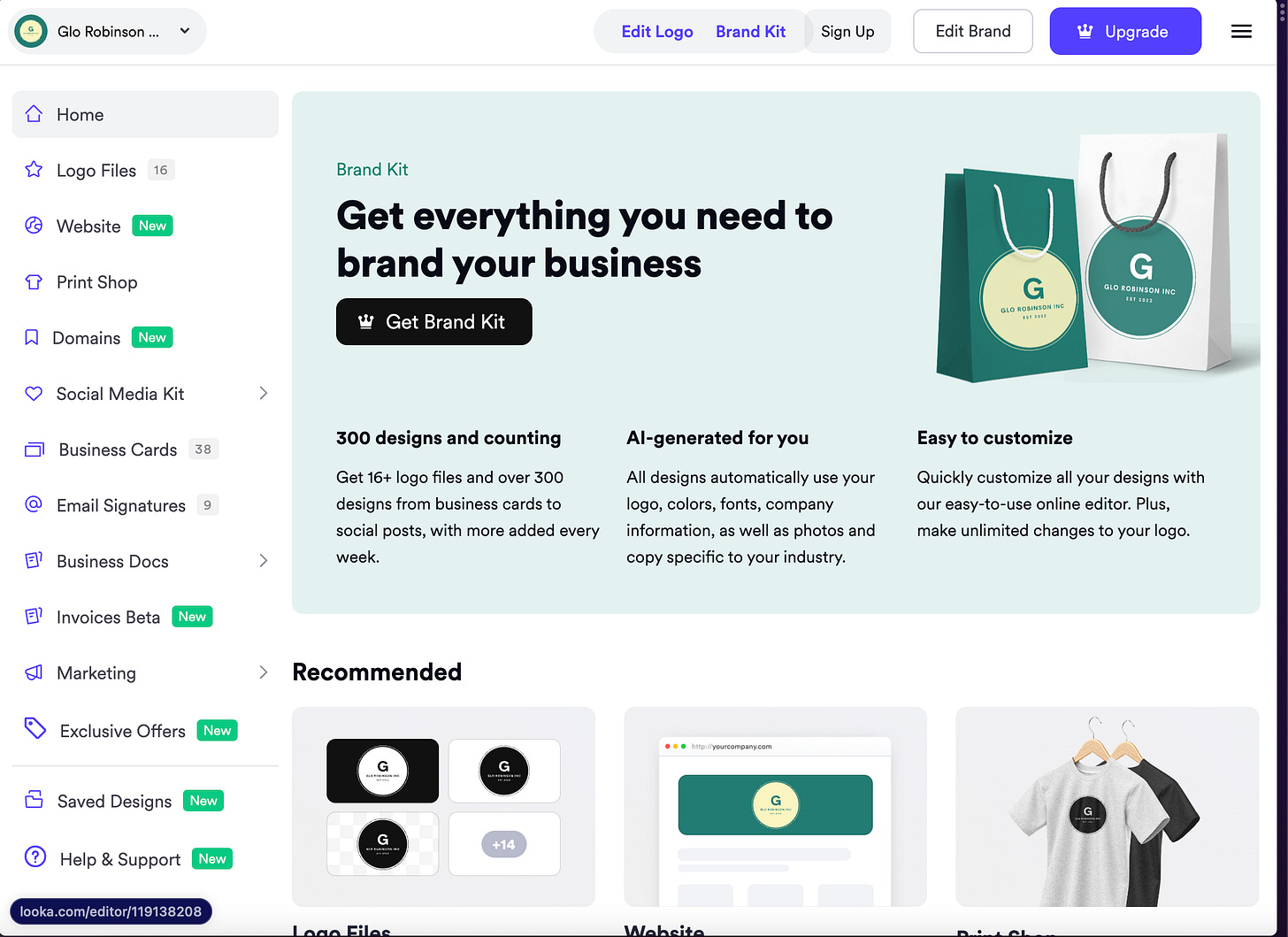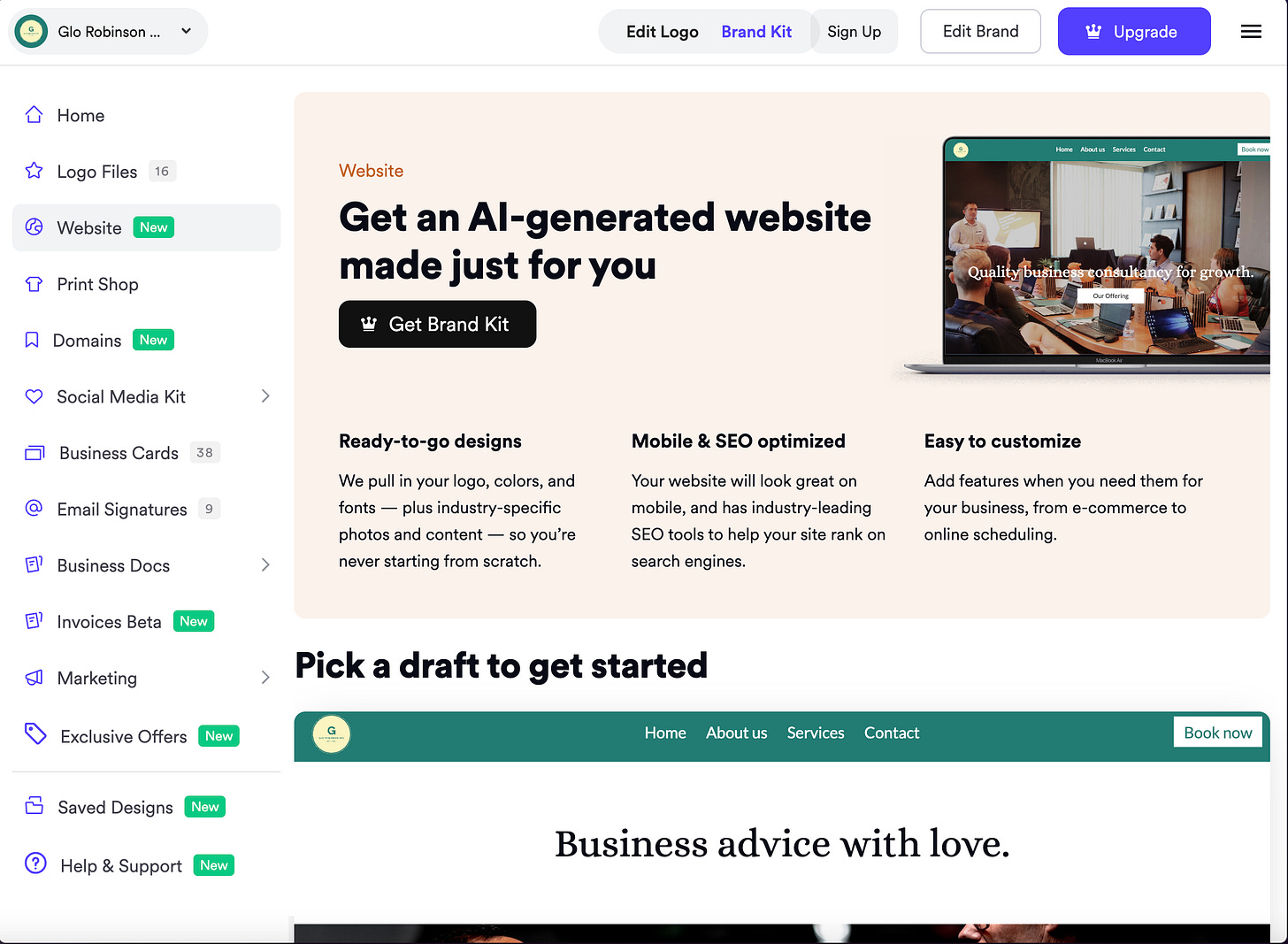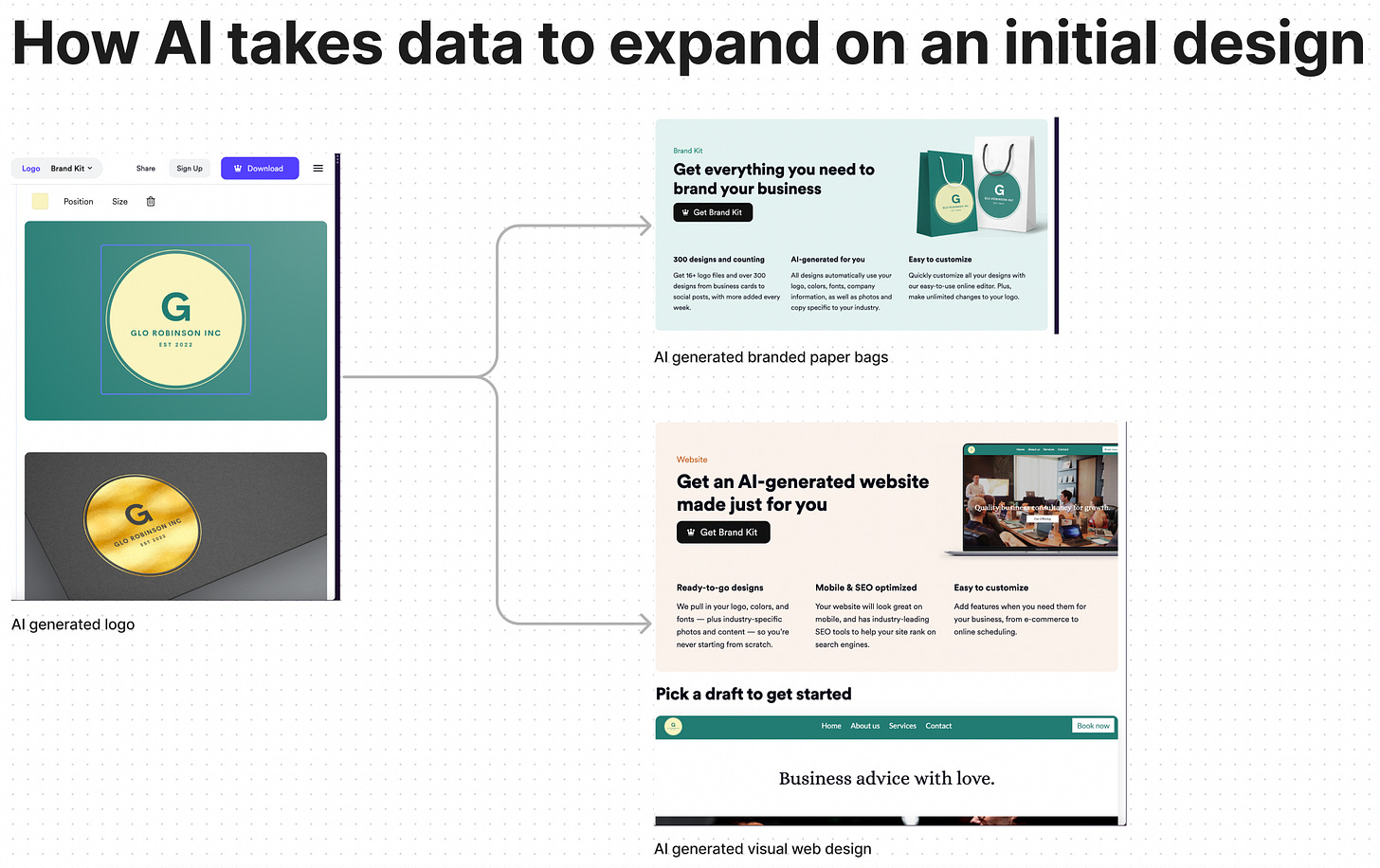Looka: Generate a brand kit based on a logo design
An analysis of an AI user flow to generate a brand kit based on a logo
Today I tried Looka, an AI-powered platform to design a logo and build a brand you love.
They've seamlessly executed a PLG motion for facilitating the users' "aha-moment" during their initial interaction with the platform. (I’m assuming the "aha-moment," is the “critical user journey” of designing a logo using AI).
The “job to be done” for this flow could be: “When I need to design a logo for my consulting practice, I want visual ideas to inspire me so I can design an aesthetic logo in less time.”
The key value propositions this tool provides are:
design ideation and inspiration
helping novices produce visually pleasing logos faster
While AI is still in its infancy to nail down the exact specifications users expect on the first try, generating ideas and being a “helpful muse” is an appropriate and valid use case that meets the emotional value propositions that are sustainable to ideally maintain user retention and overall satisfaction.
For Looka’s user flow, I broke it down into three phases to visualize how they built on an initial logo design to generate a brand kit.
Phase One. Use AI to generate a Logo
First they had me pick an industry
Then they asked me to pick some logos I liked
Then they asked me to pick some colors I liked
They had me pick some symbols
They generated some logos for me
Phase Two. Edit your AI generated logo
I eventually scrolled and found a logo I liked and once I chose it, they provided me options to edit the design and even recommended more options based on the design I chose
Phase Three. Take a logo design and generate a brand kit
They should me my new logo in a full brand kit to truly visualize its potential
Here’s an example of sample website based on the logo I created
Looka is one of the first companies I’ve experienced that has optimized AI to use an AI generated asset as a main “data source” to generate multiple outputs. Below I created a visual diagram to explain how they did this:
There are models available that can be trained to generate images such as paper bags or visual outlines of sites. The prompt engineering used for creating brand assets extracts data points from the original logo.
Parting Thoughts
As generative AI products advance, we will start to see more products use AI to generate initial designs or documents that will be the origin source to generate more assets that are tangentially related.
Again the core concepts to keep in mind are:
When AI tools generate designs and documents, they are first drafts, not the final one.
To receive accurate generative outputs, if AI has a main source of data (e.g: the logo) to pull from, your results will be significantly more accurate than simply relying on an open LLM as your data source
AI helps you work faster by giving you data points and artifacts that would normally take hours or weeks to gather. In this example, providing design inspiration based on your initial concept will help you design your final version faster versus searching the internet when it’s hard to specify what you’re looking for as initial design inspiration.



